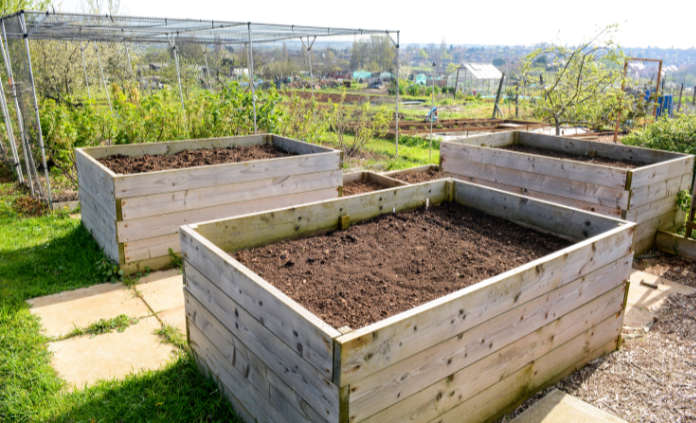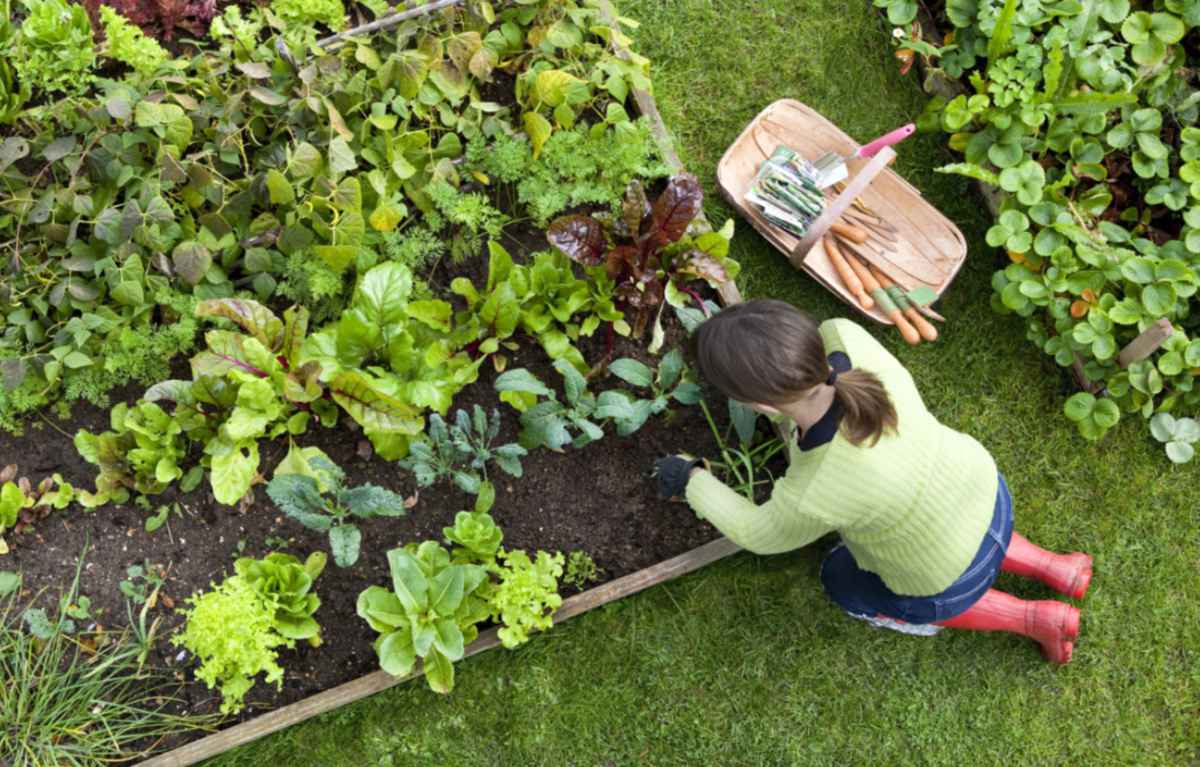There has never been a better time to grow your own vegetables, but not all of us have a plot to do it. So, if an allotment is a no-go and you don’t want to dig up your lawn, a raised garden bed could be the answer.
You can make them as big or small as you require, buy or build your own, install it wherever you like, and then all you need to do is get planting.
They’re a great way to remodel your garden, are easier to manage and are also a good option for new-build gardens, where soil quality can be a problem.
View this post on Instagram
How to build a raised garden bed
First things first, you need to choose a suitable location for your raised bed, says Marcus Eyles, horticultural director of Dobbies Garden Centres. “This will depend on the plants you want to grow. If it’s for shade-loving plants, then it will need to be in the shadier parts of your garden.
“If it’s for vegetables, it must be in an open position that is not under trees and ideally in full sun or only partial shade. This location would also apply to most flower beds, as they require plenty of sunshine. To stop the raised garden bed from becoming waterlogged, the ground must be well drained.”
What you’ll need to build a raised garden bed
View this post on Instagram
To build your raised garden bed, you’ll need sleepers (if you’re going to build your own), or a wooden or metal kit if you prefer a ready-made option. You’ll need some tools too – a hammer, spade and screws, nails or bolts. Then you’ll need membrane (to keep the weeds out), topsoil and peat-free compost to fill.
“You can buy everything you need at your local garden centre,” says Eyles. “You’ll also be able to shop online, but when it comes to materials, I always recommend buying in person, so you can see and feel the quality.”

Whether you build your own or buy a kit is all down to personal preference. A bespoke one can be tailored to fit your space, notes Eyles, and advises that you consider the style of your garden when deciding. “Sleepers are chunky and robust for larger beds. Ready-made kits are lightweight, easier to transport and great for beginners.” It’s also worth noting beds built from pressure-treated and heavy-duty products like sleepers, are likely to last the longest.
If you opt for a kit, setting up your raised bed can be done and dusted in a few hours. Building your own with sleepers is likely to take about a day, depending on the size of your space.
A step-by-step guide to building a raised garden bed
View this post on Instagram
Step 1: Measure out the space required.
Step 2: Level the area, removing any debris or grass.
Step 3: Ensure the soil you are building on is free of perennial weeds.
Step 4: Put the boards, panels or sleepers into position and attach them together with the appropriate fixings.
Step 5: Ensure the corners are right angles.
Step 6: Lay the membrane to stop weeds coming through, and then fill it with topsoil and peat-free compost mixed together. You’ll need two thirds topsoil to one third peat-free compost, says Eyles.
What can you grow in a raised garden bed?
View this post on Instagram
Eyles suggests growing ericaceous plants (from the heather family), as you can fill the bed with the acid soil they love; alpines and/or herbs, as they like free draining soils; or vegetables. Salad leaves, spinach, kale, beans, peas, potatoes, carrots, courgettes, radishes and onions are all pretty straightforward for beginners to grow.
Why not get the kids involved, too? “All of these are easy to grow and great for children to start from seed, so young gardeners can watch and learn how they grow and produce their crops during the season, from start to finish,” he says.
Best-selling grow your own vegetables books
Stuck for inspiration? Check out our list of best-selling Amazon products!
- New
- Mint Condition
- Dispatch same day for order received before 12 noon
- Allotment Month By Month: Grow Your Own Fruit and Vegetables Know What To Do When
- Product type: ABIS BOOK
- Brand: DK
- RHS Step-by-Step Veg Patch: A Foolproof Guide to Every Stage of Growing Fruit and Veg
- Product type: ABIS BOOK
- Hardcover Book
- Paul Peacock (Author)
- English (Publication Language)
- 176 Pages - 01/12/2017 (Publication Date) - Robinson (Publisher)
- Royal Horticultural Society (Author)
- English (Publication Language)
- 304 Pages - 09/01/2012 (Publication Date) - Mitchell Beazley (Publisher)
Last update on 2024-03-29 / Affiliate links / Images from Amazon Product Advertising API
You may be interested in…
This article may include affiliate links to products and services where we may receive a small fee to support the running of this site if you make a purchase or is a sponsored article from one of our select editorial partners providing valuable advice and information to our readers.




































































